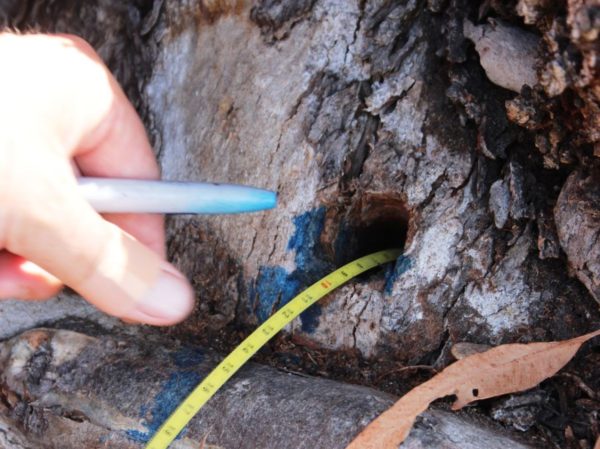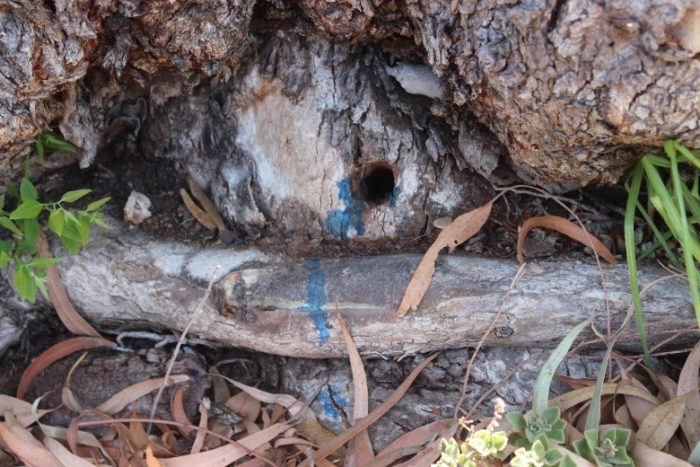A number of blue gum tree poisonings have been noticed by locals and reported to the City of Cape Town following the most recent incident that took place on the historical grounds of Kenilworth.
The latest victim of the poisonings is a large tree along Wessels Road, which will have to be removed. Last year nine trees were poisoned in the Durbanville area as well, and there is a possibility that even more trees could be poisoned.
Earlier this month the City’s horticulturalists inspected the site at Kenilworth where the gum tree was poisoned. They confirmed a number of holes were drilled into the base of the tree and a herbicide was injected into them, leaving a blue stain. The tree in question is between 75 and 100 years old. The tree is roughly 25m high and 16m wide and is currently dying.
Gum trees form part of the Eucalyptus family and were planted throughout the Kenilworth area and the greater Western Cape as a whole. When they were first planted they were popular due to their drought resistance and protection from shade and wind.
The City’s Recreation and Parks Department was made aware of the suspected poisoning of a large gum tree in Kenilworth, which forms part of the area’s historical landscape. There is a possibility that more trees could be poisoned. Read more: https://t.co/9ycDPHTUSC #CTNews pic.twitter.com/zNF7lVp8xf
— City of Cape Town (@CityofCT) January 22, 2020
“The intentional destruction of trees is worrying as it indicates the lengths some will go to, to destroy trees that play such a vital role in the eco-system and urban landscape. Apart from the aesthetic value, trees also have environmental benefits such as cooling, shade for people, providing a safe space for birds and the absorption of carbon dioxide. Trees could also add up to 15% to property values and save on air-conditioning costs which is an economic benefit. The City views this illegal activity in a serious light and we will investigate this to hold those responsible to account,” said Mayco Member for Community Services and Health, Councillor Zahid Badroodien.

With regards to the trees poisoned in Durbanville, various methods of poisoning are being used such as applying a herbicide to the soil in small pools around three trees. Others were poisoned by full spray cover and infected by poison injected into drilled holes in the trees, as seen in Kenilworth. A criminal case was opened by the Recreation and Parks Department with the South African Police Service.
Once poison is injected into drilled holes in the tree, the tree’s vascular systems distribute the substance throughout the body of the tree as part of its essential functions. Most herbicides kill plants by disrupting the cell division processes that repair and grow cells. Once poisoned, there is no way to cure the tree and it is essentially dead.
“What makes early detection difficult is that people can’t easily see if a tree is poisoned. We drive past and sometimes don’t even take notice of the trees along the road. In most instances, only when the branches are dead do we notice that something could be wrong. Residents that notice any harmful activity towards trees located on City-owned land should inform the Recreation and Parks Department. We should take pride in our community parks and open spaces – these spaces are located in communities, for use by communities,” said Badroodien.
Badroodien asks residents to inform the city arborist of suspected poisoning by e-mailing [email protected] or calling one of the council’s emergency numbers (107 from a landline, 021-480-7700 from a cellphone).
Picture: Supplied

